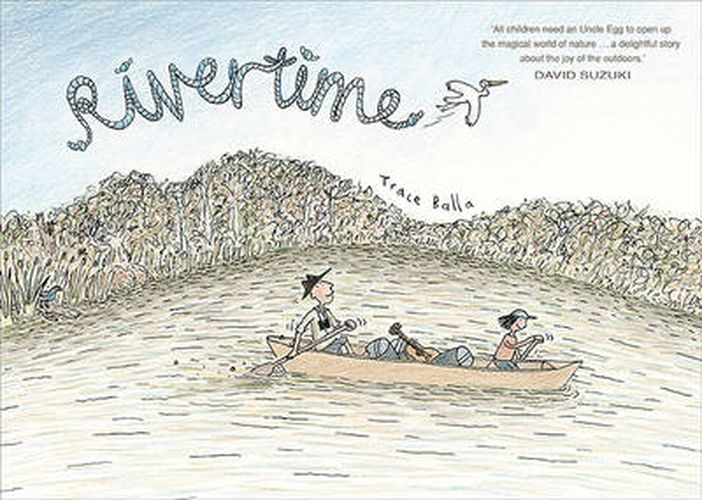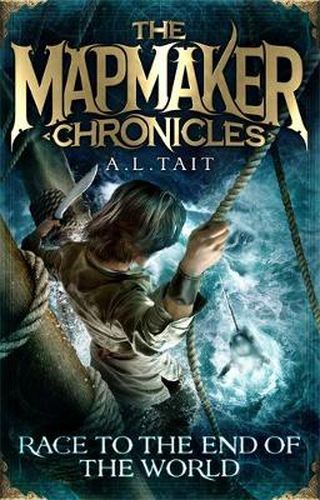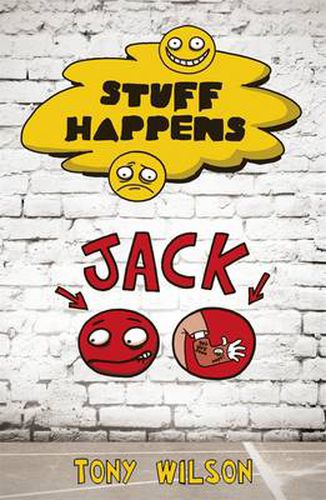We’re delighted to announce the six books shortlisted for the Readings Children’s Book Prize 2015!
The Prize recognises and celebrates Australian books that children love to read, and raises the profile of debut and on-the-rise Australian children’s book authors. The Prize judges are a panel of Readings children’s book specialists.
The six shortlisted titles are…
Rivertime by Trace Balla
'This book is delightfully unique, it is an absolute thrill that it has been shortlisted for our award. Produced in a landscape format, it is a hand-drawn graphic novel suitable for independent readers aged 5–10, but also for adults and children to enjoy together. The story is one we all need to absorb – it’s about tuning in to the rhythms of nature and appreciating the cornucopia of animal and plant life that can be discovered away from our busy lives. When 10-year-old Clancy’s Uncle Egg takes him on a boat journey on the Glenelg River, Clancy is initially worried about being bored and missing his hi-tech toys. But Clancy soon learns to tune in to ‘rivertime’, to relax and enjoy the sights, sounds and smells of nature. The simple line drawings are perfect for this gentle journey, with illustrations of numerous Australian birds and animals labelled. It’s just perfect for those interested in discovering nature and for youngsters you’d like to engage with something other than their screens.'
– Angela Crocombe, Readings Carlton
Ophelia and the Marvellous Boy by Karen Foxlee
'Ophelia and the Marvellous Boy has it all: a magical realm embroiled in a battle between good and evil; a council of wizards pitted against an evil Snow Queen; a 300-year-old boy and a pragmatic, rational girl caught in a peculiar museum; a delicious juxtaposition of magic and logic; and a quest to save the world. Our heroes, Ophelia and the Marvellous Boy, are appealing characters vulnerable yet strong, ultimately courageous in the face of adversity, their fates inextricably linked. Certainly, Ophelia’s quirky mannerisms and adroit observations inject a touching humour. I cared for both of them deeply and shed a few tears when the going got tough! In this enchanting story, which skilfully draws from a number of sources, fantasy kingdoms collide and merge with the real world and parallels are artfully drawn and explored. A wonderful adventure, perfect for independent readers aged 9 and up, and an ideal read-aloud for the whole family.'
– Athina Clarke, Readings Malvern
Figgy in the World by Tamsin Janu
'Sometimes you meet a child character in a story and wish that you were more like them. That’s how I feel about Figgy. She’s a determined and resilient girl with a fantastic sense of humour, who can survive anything because her rationalisations about the world are a hundred times better than the truth. In this way Figgy bears resemblance to the much-loved Pollyanna, with a similar streak of independence and mischief as well as a happy disposition, but here the setting is Africa and the author has drawn on her personal experience to write this story. On her quest to travel from Ghana to America to buy vital medicine for her beloved grandmother, Figgy makes a friend for life and surprises everyone she meets. Figgy in the World is an uplifting adventure, seasoned with hope and laughter. Highly recommended as a family read for children aged 6 and up, or independently from 8.'
– Emily Gale, Readings Online
How to Save the Universe in Ten Easy Steps by Allison Rushby
'A fair proportion of children’s fiction has been issue based in recent times and while that definitely has its place, when a book comes along that is just fun it is refreshing. How to Save the Universe in Ten Easy Steps is fun with great dialogue, a narrative that zings along and an endearing main character. Cooper and Molly are twins who have nothing in common and on the eve of his party she reveals she is an alien sent to protect him as he gets about saving the world – no pressure! Now, Cooper is just an ordinary kid with only one remotely feasible super power: telling the time, to the second, without a timepiece. But then, maybe saving the world is all about timing! This is a laugh-out-loud funny book but you better read it quickly before the end of the world. Suitable for readers aged 8 and up.'
– Alexa Dretzke, Readings Hawthorn
The Mapmakers Chronicles: Race to the End of the World by AL Tait
'I’m delighted to announce Race to the End of the World as a finalist in the Readings Children’s Book Prize. With its high-seas adventure and characters that any reader would follow to faraway lands, it was one of my standout favourites of last year. In Book 1 we meet Quinn, a boy with an extraordinary memory who is picked to train as a mapmaker. The king has announced a competition: the first person who can create a map of the world will receive whatever they wish, be it money, power or fame. Quinn soon finds himself at sea aboard the Libertas, where treachery and danger are commonplace as they search for undiscovered lands. This book made me feel like I was discovering an Australian fantasy classic in the vein of Emily Rodda’s Deltora Quest, and I bet there will be plenty of readers aged 9 and up eagerly awaiting Book 2’s release in April.'
– Holly Harper, Readings Carlton
Stuff Happens: Jack by Tony Wilson
'I will be honest – I did not expect to enjoy this as much as I did! Books about (and aimed at) primary-school boys with lots of sporting activities and playground roughhousing are not generally my cup of tea. But Jack, beautifully written by Tony Wilson, is just such a lovely character to spend time with. Each book in the Stuff Happens series is told from the perspective of a different character and Jack is an easy, gentle companion. He instantly draws you into his world and within the first couple of pages Wilson made me care deeply about Jack’s life and problems. The book is very easy to relate to and I think that it really encourages engaged reading and emotional literacy amongst younger readers as it deals with the relationships between the boys in a way that is, unfortunately, uncommon in junior fiction. It’s perfect for readers aged 7–9 to read independently.'
– Isobel Moore, Readings St Kilda
The winner will be decided by the Readings Children’s specialists along with our guest judge, bestselling author Sally Rippin, in June and will feature in our July newsletter. Find out more here.





